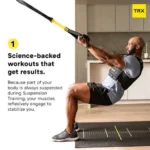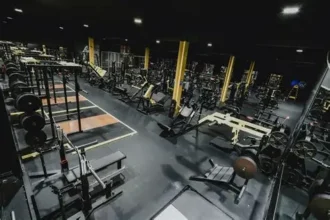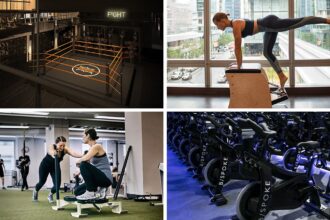Introduction: A City Dominating Forces Transformed by Fitness
New York City is leading the charge in the 2025 Dominating Forces Fitness Revolution, with innovative gyms, wellness programs, and lifestyle trends reshaping how urban residents approach health. From high-tech fitness studios to community wellness initiatives, the city has become a hub for holistic physical well-being. Explore locations like Equinox New York to witness the latest in premium fitness experiences.
Force 1: Technology-Driven Workouts
Wearables, fitness apps, and smart gym equipment are redefining exercise routines. New Yorkers are tracking calories, heart rate, and performance metrics in real-time. Apps like MyFitnessPal and devices such as Fitbit make personalized workouts accessible to everyone, driving engagement in the city’s Dominating Forces Fitness Revolution.
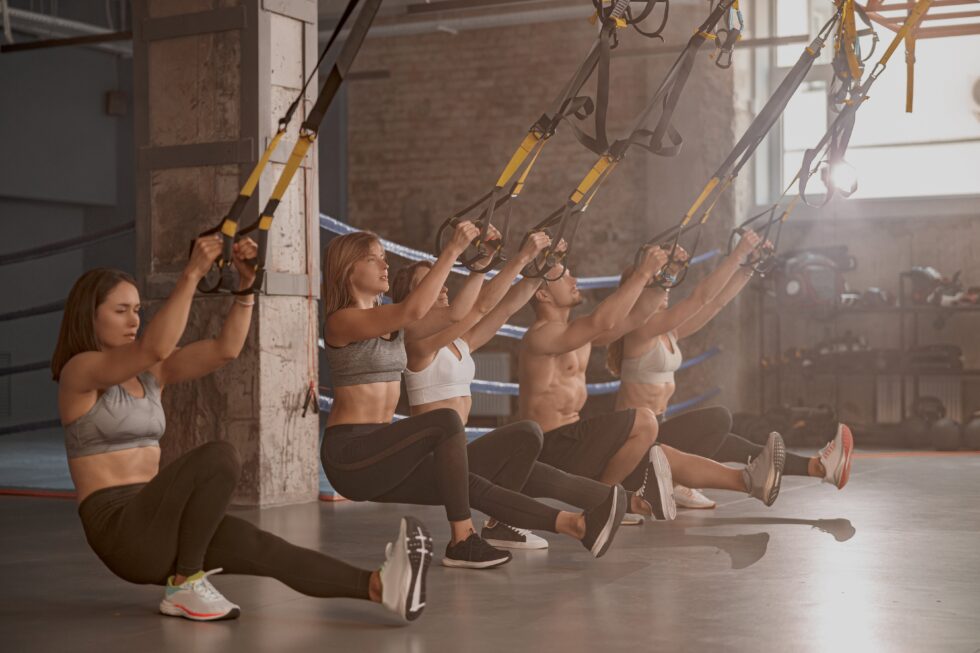
Force 2: Inclusivity and Adaptive Fitness
The 2025 fitness scene in New York is inclusive, offering programs for people of all body types, ages, and abilities. Gyms such as Curves NYC cater specifically to larger-bodied clients, ensuring everyone can participate in the wellness movement.
Force 3: Boutique and Specialized Studios
Boutique studios focusing on yoga, Pilates, HIIT, and functional training are booming. These specialized environments create immersive experiences that keep clients motivated, fostering community and accountability within New York’s Fitness Revolution.
Force 4: Holistic Wellness Integration
Urban fitness is no longer limited to workouts. Nutrition counseling, mental health programs, and recovery therapies are integrated into modern gyms. Facilities such as The Wellness Center NYC combine physical training with mindfulness, creating a full-spectrum wellness experience.
Force 5: Social Media and Community Engagement
Social media platforms amplify fitness trends, creating communities of inspiration and support. Influencers, live-streamed classes, and online challenges encourage participation and accountability, fueling the rapid growth of the city’s Fitness Revolution.
Force 6: Corporate and Urban Wellness Programs
Companies in New York are investing in employee wellness programs, offering gym memberships, fitness challenges, and health workshops. These initiatives integrate fitness into daily urban life, promoting long-term healthy habits and expanding the reach of the Fitness Revolution.
Conclusion: The Future of Urban Fitness
The 2025 New York Fitness Revolution is a multi-faceted movement powered by technology, inclusivity, boutique studios, holistic wellness, social engagement, and corporate initiatives. As the city continues to innovate, residents are embracing new ways to stay active, healthy, and motivated.
Further Reading and References
- Healthline – Fitness Trends 2025
- Men’s Health – Urban Fitness Insights
- Women’s Health – Wellness Trends
High-Tech Fitness Trends Leading the Way
Wearables, smart gym equipment, and fitness apps are transforming workouts into personalized, data-driven experiences. New Yorkers are increasingly relying on technology to track progress, optimize performance, and stay motivated, making fitness more engaging than ever before.
Inclusive Programs for Every Body Type
Modern gyms in New York prioritize inclusivity, offering adaptive classes for diverse body types, ages, and abilities. Programs that cater to larger-bodied clients, seniors, and beginners ensure that everyone can participate and feel supported in their fitness journey.
Boutique Studios Spark Motivation
Specialized studios focusing on yoga, Pilates, spinning, HIIT, and functional training are booming. These boutique environments offer focused expertise, community engagement, and immersive experiences, helping clients stay consistent and motivated.
Holistic Wellness Beyond Exercise
Fitness in 2025 is no longer just about physical training. Nutrition coaching, recovery therapies, meditation sessions, and mental health support are integrated into many urban wellness programs. This approach fosters overall well-being and sustainable lifestyle changes.
Social Media Driving Engagement
Online communities, fitness influencers, and virtual challenges are connecting people and inspiring participation. Social media platforms amplify trends, create accountability, and help individuals discover new workouts, fueling the city’s fitness culture.
Corporate Wellness Programs Boost City-Wide Health
Companies in New York are investing heavily in employee wellness programs, offering gym memberships, wellness workshops, and team fitness challenges. These initiatives integrate health into daily routines, encouraging long-term engagement and healthy habits.
Urban Wellness Events and Pop-Ups
Fitness pop-ups and urban wellness events provide unique opportunities for residents to try new workouts, connect with experts, and explore innovative products. These experiences create excitement and foster a sense of community around fitness.
Nutrition and Functional Foods in Fitness Culture
Modern fitness enthusiasts are paying close attention to nutrition. Superfoods, protein-rich snacks, and meal-prep services complement workouts, enhance recovery, and promote long-term health as part of a complete fitness lifestyle.
Community-Driven Fitness Spaces
Group classes, local sports leagues, and neighborhood gyms cultivate a sense of belonging. Community-driven spaces motivate participants, provide social support, and encourage consistent participation in fitness activities throughout the city.
The Future of Fitness Innovation
As New York continues to lead the way in urban wellness, the integration of technology, inclusivity, boutique experiences, holistic wellness, social engagement, and corporate programs will define the next era of fitness. Continuous innovation ensures that the city remains a global hub for health and vitality.
High-Intensity Interval Training Takes Center Stage
HIIT classes are exploding in popularity across New York, offering efficient workouts that burn calories and build strength in short periods. These dynamic sessions attract busy urbanites looking for maximum results in minimal time.
Recovery and Regeneration Focused Programs
Modern gyms emphasize recovery through stretching sessions, foam rolling, cryotherapy, and infrared saunas. Recovery programs help prevent injuries, enhance performance, and ensure long-term fitness sustainability.
Personalized Coaching and Training Plans
Trainers now offer highly personalized coaching, combining data analytics with individual goals. Customized programs ensure participants stay motivated, overcome plateaus, and achieve measurable results efficiently.
Outdoor Fitness Adventures in the City
Urban fitness isn’t confined to gyms. Rooftop yoga, park bootcamps, and waterfront running clubs provide refreshing outdoor alternatives, encouraging participants to enjoy the cityscape while staying active.
Wearable Technology Enhances Performance
Smart watches, heart-rate monitors, and fitness trackers empower users to optimize workouts. Real-time feedback, goal tracking, and progress analytics enhance commitment and accountability across all levels of fitness enthusiasts.
Hybrid Workouts Combine Strength and Cardio
Combining resistance training with cardio exercises in hybrid sessions boosts endurance, builds lean muscle, and accelerates fat loss. This approach appeals to diverse participants looking for efficient and effective routines.
Mind-Body Fitness Programs Gain Popularity
Yoga, Pilates, and tai chi classes emphasize flexibility, balance, and mental focus. Mind-body programs help reduce stress, improve posture, and support holistic wellness in the bustling urban environment.
Functional Fitness Enhances Everyday Life
Functional training emphasizes movements used in daily activities, improving strength, mobility, and coordination. Incorporating squats, lifts, and rotational exercises helps participants perform everyday tasks more efficiently.
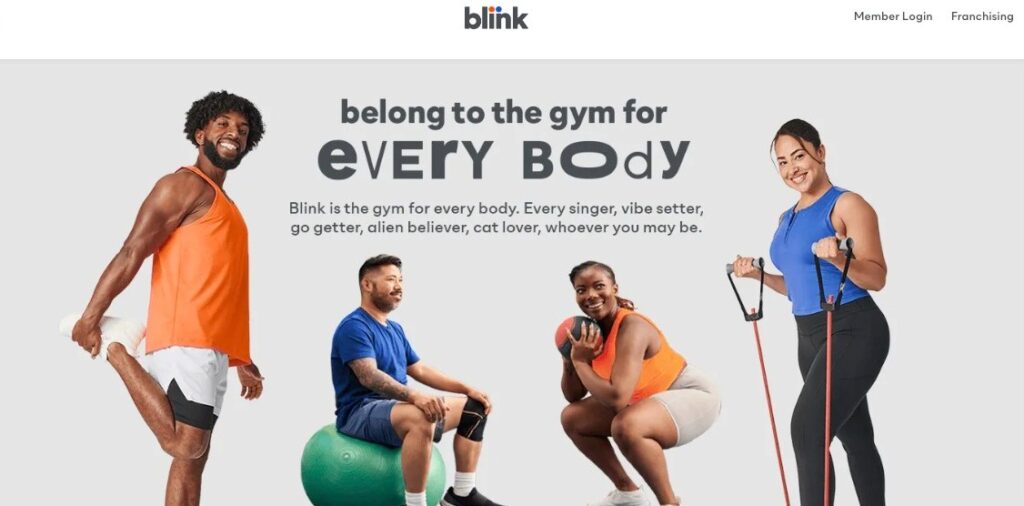
Nutrition Guidance Complements Physical Training
Expert nutrition coaching is integrated into many fitness programs, ensuring participants fuel their bodies effectively. Personalized meal plans, supplementation advice, and educational workshops enhance performance and recovery.
Fitness Communities Build Motivation and Accountability
Group challenges, social clubs, and online forums create support networks that boost engagement. Community-driven motivation keeps participants accountable and fosters long-term commitment to fitness goals.
High-Impact Group Classes Boost Motivation
From spin studios to dance-based cardio, high-energy group classes inspire participants to push harder and stay committed. The camaraderie and shared energy create a motivating environment for all fitness levels.
Advanced Gym Equipment for Optimal Results
Modern fitness centers feature cutting-edge machines that track performance, adjust resistance automatically, and provide interactive feedback. These innovations help users optimize workouts safely and effectively.
Integrating Mindfulness into Exercise Routines
Mindfulness practices, such as breathwork and meditation, are incorporated into physical routines to reduce stress and improve focus. Participants gain mental clarity alongside physical fitness, enhancing overall well-being.
Corporate Partnerships Promote Employee Health
Companies in New York collaborate with local gyms to provide memberships, on-site classes, and wellness workshops. These programs encourage healthier lifestyles, boost productivity, and reduce absenteeism among employees.
Accessible Fitness for All Ages
Programs tailored for children, seniors, and adults with mobility challenges ensure that everyone can participate in the city’s fitness culture. Accessibility initiatives foster inclusivity and long-term community engagement.
Specialized Recovery Zones in Gyms
Many gyms now include dedicated recovery zones featuring massage chairs, stretching areas, and hydrotherapy options. These spaces support post-workout recovery, prevent injuries, and enhance overall fitness outcomes.
Personalized Fitness Challenges and Competitions
Gamified challenges and friendly competitions keep members engaged and motivated. These initiatives encourage goal setting, track progress, and create a fun, competitive atmosphere that enhances performance.
Integration of Virtual Workouts
Virtual workout classes allow participants to train from home while maintaining access to expert guidance and community support. This hybrid model offers flexibility without sacrificing motivation or accountability.
Holistic Health Workshops and Seminars
Workshops covering nutrition, mental wellness, and fitness education empower participants with knowledge. Learning about healthy habits, meal planning, and lifestyle optimization supports sustainable health improvements.
Innovative Strength Training Techniques
Strength training has evolved beyond traditional weightlifting. Modern programs incorporate functional movements, resistance bands, and bodyweight exercises, helping participants build lean muscle, improve mobility, and prevent injuries.
Cardio Workouts with a Twist
High-energy cardio routines are being redesigned with creative elements such as dance, boxing, and obstacle courses. These fun and challenging workouts keep participants engaged while improving heart health and endurance.
Personalized Fitness Assessment
Fitness centers are offering in-depth assessments that analyze posture, strength, flexibility, and cardiovascular performance. These evaluations allow trainers to create tailored plans, ensuring effective and safe workouts for every individual.
Urban Adventure Fitness
Outdoor bootcamps, hiking clubs, and rooftop yoga sessions bring a sense of adventure to urban exercise. Participants enjoy fresh air, social interaction, and unique challenges that keep fitness exciting and sustainable.
Mindfulness and Stress Management
Mental well-being is increasingly integrated into physical training. Techniques like meditation, breathwork, and guided relaxation help reduce stress, enhance focus, and improve overall quality of life.
Nutrition Workshops and Education
Many gyms and wellness centers now provide workshops on healthy eating, meal prep, and supplementation. Participants gain the knowledge needed to fuel their bodies effectively and make sustainable dietary choices.
Adaptive Classes for All Skill Levels
Programs are designed to accommodate beginners, advanced athletes, and everyone in between. Adaptive classes ensure that exercises can be modified to suit individual abilities and prevent injuries while maintaining progress.
Integration of Wearable Technology
Participants are increasingly using smartwatches, heart-rate monitors, and fitness apps to track performance and monitor health metrics. Technology enables real-time feedback and helps maintain motivation and accountability.
Recovery-Focused Spaces
Dedicated areas for stretching, foam rolling, and hydrotherapy help participants recover faster and prevent injuries. Recovery-focused spaces are becoming a key part of modern gyms, emphasizing long-term fitness sustainability.
Seasonal and Themed Workouts
Seasonal challenges and themed workouts add excitement and variety to fitness routines. From summer outdoor circuits to holiday-inspired classes, these innovative sessions keep engagement high and prevent boredom.
Urban Outdoor Fitness Parks
Public fitness parks in New York provide open-air spaces for calisthenics, running, and group workouts. These accessible areas encourage residents to incorporate regular exercise into their daily routines while enjoying fresh air and community engagement.
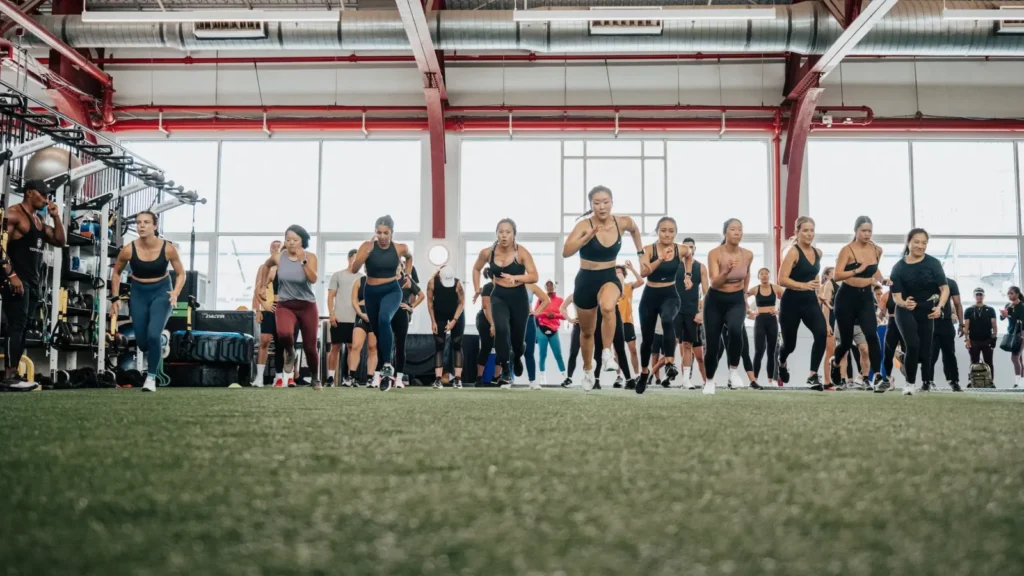
Frequently Asked Questions – Dominating Forces in the 2025 Fitness Revolution
- What are the Dominating Forces driving the 2025 New York Fitness Revolution? The Dominating Forces include technology integration, inclusivity, boutique fitness studios, holistic wellness, social engagement, corporate wellness programs, and innovative training methods. These forces collectively shape urban fitness culture and motivate residents to maintain healthy lifestyles.
- How is technology among the Dominating Forces impacting workouts? Smart gym equipment, fitness apps, wearables, and real-time tracking are enabling data-driven workouts. These tools allow participants to measure progress, optimize performance, and customize routines, making exercise more efficient and engaging.
- Why are inclusivity programs considered a key Dominating Force? Inclusivity ensures that people of all body types, ages, and fitness levels can participate. Programs for larger-bodied clients, seniors, and beginners create equitable access to wellness and foster a welcoming fitness environment.
- What role do boutique studios play as Dominating Forces? Boutique studios specializing in yoga, Pilates, HIIT, and functional training provide immersive, high-quality experiences. These studios build community, motivate participants, and encourage consistent attendance, amplifying the city’s fitness culture.
- How does holistic wellness integrate into the Dominating Forces? Holistic wellness combines nutrition, recovery, mental health, and mindfulness with physical training. Gyms incorporating these elements support overall well-being, promote sustainable health habits, and enhance the effectiveness of workouts.
- In what ways is social media one of the Dominating Forces? Social media platforms connect fitness enthusiasts, share trends, and foster communities. Influencers, live-streamed classes, and online challenges increase engagement and accountability, spreading the city’s fitness culture widely.
- How do corporate wellness initiatives qualify as Dominating Forces? Companies offering gym memberships, wellness workshops, and fitness challenges integrate health into daily routines. Corporate wellness programs encourage long-term engagement, reduce stress, and contribute to overall public health improvements.
- How important are high-intensity workouts as Dominating Forces? HIIT and circuit training provide efficient, effective exercise for busy urbanites. These workouts maximize calorie burn, improve strength and endurance, and keep participants motivated with dynamic and challenging routines.
- Can recovery-focused programs be considered Dominating Forces? Absolutely. Stretching, foam rolling, cryotherapy, and infrared saunas are integral to modern fitness. Recovery programs prevent injury, enhance performance, and support participants in sustaining long-term exercise commitments.
- How do wearable devices contribute to Dominating Forces? Wearables track heart rate, steps, calories, and sleep patterns, providing real-time feedback. This technology allows participants to monitor progress, set goals, and adjust routines, making fitness more personalized and data-driven.
- Why is functional training part of the Dominating Forces? Functional training emphasizes movements used in everyday life. Incorporating squats, lifts, and rotational exercises enhances mobility, strength, and coordination, supporting practical fitness and long-term health.
- How do urban outdoor activities act as Dominating Forces? Rooftop yoga, park bootcamps, and waterfront running clubs provide alternatives to traditional gyms. These activities encourage engagement with the city’s environment, add variety to workouts, and promote consistent physical activity.
- Are personalized coaching programs among the Dominating Forces? Yes, personalized coaching tailors exercise plans to individual goals, fitness levels, and health conditions. Customized guidance improves adherence, prevents plateaus, and accelerates results.
- How do nutrition programs function as Dominating Forces? Nutrition plans, supplementation guidance, and educational workshops complement exercise routines. Proper nutrition enhances recovery, energy levels, and overall performance, making it a critical component of modern fitness culture.
- In what ways do community-driven programs qualify as Dominating Forces? Group classes, local sports leagues, and fitness challenges foster a sense of belonging. Community-driven programs motivate participants, provide social support, and encourage sustained engagement in fitness activities.
- How does gamification act as a Dominating Force? Gamified challenges, leaderboards, and interactive apps increase engagement, set measurable goals, and promote healthy competition. Gamification makes workouts fun and incentivizes consistent participation.
- Are hybrid workouts considered Dominating Forces? Yes, combining strength and cardio in hybrid sessions maximizes efficiency and effectiveness. These workouts cater to busy lifestyles while providing comprehensive fitness benefits.
- How does mindfulness contribute as a Dominating Force? Incorporating meditation, breathwork, and mental focus into routines enhances mental clarity, reduces stress, and improves exercise performance, creating a balanced approach to health.
- Why are high-tech gym setups included among the Dominating Forces? Advanced equipment with interactive displays, AI-driven adjustments, and connectivity features allows precise tracking and feedback. High-tech setups improve efficiency, safety, and the overall workout experience.
- How do urban wellness events serve as Dominating Forces? Pop-ups, workshops, and city-wide fitness events expose participants to new workouts, products, and wellness trends. These experiences generate excitement, build community, and motivate continued engagement.
- Is virtual fitness training considered a Dominating Force? Yes, virtual classes, apps, and streaming services offer flexibility while maintaining access to expert instruction and community support. Virtual training expands reach and ensures consistent participation.
- How do wellness seminars and educational programs act as Dominating Forces? Workshops on nutrition, mental health, and fitness empower participants with knowledge. Educated consumers make better choices, sustain healthy habits, and maximize the benefits of their fitness routines.
- Why are corporate partnerships a Dominating Force? Collaboration between companies and gyms provides resources, programs, and incentives for employees. Corporate partnerships integrate health into daily routines, enhancing public wellness and engagement.
- How do hybrid fitness models qualify as Dominating Forces? Combining in-person and virtual training offers flexibility, accessibility, and convenience. Hybrid models meet diverse needs while maintaining social interaction, accountability, and community engagement.
- Are specialized recovery zones considered Dominating Forces? Dedicated recovery areas with stretching zones, hydrotherapy, and massage options support physical regeneration. Recovery zones prevent injuries, enhance performance, and improve overall member satisfaction.
- How does social engagement act as a Dominating Force? Sharing achievements, joining online fitness communities, and participating in challenges fosters motivation and accountability. Social engagement strengthens commitment to regular exercise and wellness practices.
- Why is continuous innovation part of the Dominating Forces? New training methods, equipment, and wellness concepts keep the city’s fitness scene dynamic and appealing. Continuous innovation drives participation, inspires consistency, and attracts a diverse population.
- How do outdoor fitness parks contribute as Dominating Forces? Public parks designed for calisthenics, running, and group exercises provide accessible fitness opportunities. Outdoor spaces encourage healthy habits, community interaction, and increased physical activity.
- How do mind-body programs qualify as Dominating Forces? Yoga, Pilates, and tai chi enhance flexibility, balance, and mental focus. Integrating mind-body exercises into fitness routines improves overall wellness and reduces stress, complementing physical training.


